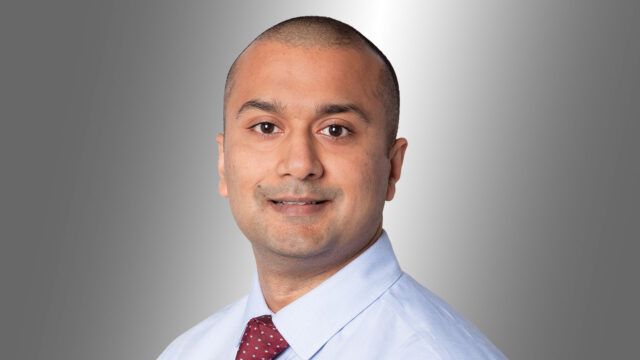The prospect of a surprise defeat for Narendra Modi’s BJP in the upcoming general election is the number one headwind in India, according to Peeyush Mittal (pictured), lead portfolio manager on the Matthews India Fund.
India is due to hold elections next month and Modi, who took office a decade ago, is widely expected to win a third term in a likely landslide victory for the BJP.
During his tenure, he has overseen rapid economic growth as India’s economy is now the fifth largest in the world, up from the 10th largest when he first took office. His pro-business policies and infrastructure spending have been cheered by investors. Its stock market recently overtook Hong Kong to become the fourth largest in the world.
“The number one headwind could be whether the BJP comes to power or not. Let’s say there is a 99% chance that they do come back into power, but that 1% or 2% chance is what keeps us awake at night,” said Mittal.
“Currently, the market is pricing in almost a 99% chance of victory for BJP. If that does not happen, you would see almost a waterfall, especially in the small and mid-cap space.”
Mittal also lists the war in the Middle East as another potential headwind due to the fact that India is a net importer of crude oil, which means any spike in its price will have a bearing on the cost of capital.
Overall, he is sanguine about the outlook for India though. The number of tailwinds India is benefiting from are too numerous to mention, although include everything from favourable demographics to how the central bank has grappled with the latest bout of inflation.
Mittal is particularly enthusiastic about India’s prospects given the growth in manufacturing, especially on the back of supply chain shifts. He also cites the growth in infrastructure spending, particularly private capex, as well as the penetration of credit in the financial system as tailwinds.
“The opportunities that we see in manufacturing really excite us and manufacturing typically pervades many different sectors. You’re talking about auto suppliers. You’re talking about contract manufacturing within healthcare. You’re talking about some capital goods equipment within industrials. That is something that I think is going to continue to drive growth for the country for many, many years to come,” he said.
The one big complaint about India is valuations, where the MSCI India is currently trading at 26.02x price-to-earnings compared with 11.53x for China or 15.16x for emerging markets more broadly. Mittal concedes this is a worry, although he notes that most of the froth is located in the small and mid-cap segments, which he generally eschews.
“I think it’s fair to highlight that in the small-cap and mid-cap space valuations are more than healthy. You’re seeing many, many stocks, which are at 40, 50 times of earnings. So, we do expect some form of consolidation in the market in the near three to six months, maybe a little bit longer,” he said.
“I do agree that valuations are rich even in the large-cap space. They’re not as cheap as one would like them to be, but we are being more selective in where we are allocating capital. We are not chasing the 60 times or 70 times earnings targets. But we are going after opportunities, which are more reasonably priced.”
Sector Calls

The Matthews India fund is led by Mittal, who is based out of San Francisco, as well as Swagato Ghosh as co-manager. It invests at least 80% of its net assets in securities of companies located in India.
It is an unconstrained, long only, all-cap growth strategy, with a focus on companies with a sustainable competitive edge and pricing power and that are able to perform through different business cycles.
The strategy adopts a fundamental, bottom-up approach to stock picking and looks for well-run companies with strong management. It has a bias towards businesses that cater to rising domestic consumer demand and to policy independent sectors.
The fund is a top quartile performing fund on a one-, three- and five-year basis, according to FE fundinfo. It outperformed the benchmark last year, generating a 28.72% return compared with a 22.44% return for the S&P Bombay Stock Exchange 100 index.
However, it did see returns fall last year more than the index at -8.93% versus -4.53%, which Mittal attributes to its investment in Bandhan Bank. The fund had invested in the bank pre-Covid due to its high return on assets profile, but it was more adversely impacted by Covid than other lenders.
In terms of sector weightings, the fund’s largest allocation is towards financials at 29.6%. However, despite Mittal’s bullishness about the penetration of credit in the financial system, this represents a slight underweight to the benchmark, a fact Mittal says will be rectified when the fund switches to a new benchmark, the MSCI India, in April.
“Financials is the only sector which is trading at lower than the 10-year normalised multiple. So that clearly makes it very attractive. You have banks which are growing 15%, delivering 15 to 20% ROE and maybe trading at less than 10 times multiple. So that’s a combination which is very important,” he said.
The other sector Mittal highlights is healthcare, where the Matthews India fund has an 8.4% weighting compared with a 4.3% weighting for the benchmark. He cites the fact that a lot of Indian companies are generic drug suppliers into the US and we are currently seeing the best pricing environment in the US from a generic drug perspective in years.
“Along with that, you’re also seeing many of the pharmaceutical companies in India transition their business models away from just focusing on the generic side of the business and becoming more complex product manufacturers or even where we’re beginning to see some of the new entities, new chemical entities coming out of Indian companies, getting US FDA approval,” he said.
Meanwhile, the fund also has a slight underweight to consumer staples at 7.7%, which he attributes to the growth of e-commerce and the impact this is having on fast-moving consumer goods companies.
“Some of these companies are trading at 50 to 60 times earnings, which has been the case for many, many years and they are actually struggling to post even high single digit revenue growth, let alone the 20 or 25% growth they should be posting in order to justify their valuations,” he said.

















